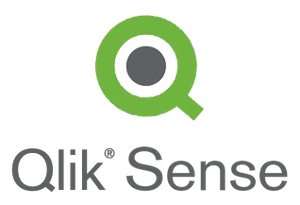Data visualization definition
Data visualization is defined as a graphical representation of data. It is used to help people understand the context and significance of their information by showing patterns, trends and correlations that may be difficult to interpret in plain text form.
These visual representations can be in the form of graphs, pie charts, heat maps, sparklines, and much more.
What are the advantages of data visualization?
In BI, or Business Intelligence, data visualization is already a must have feature. With the emergence of Big Data, data visualization is becoming even more critical to help data citizens make sense of the millions of data being generated everyday. Not only does it help data citizens curate their data into an easy-to-understand visual representation, it also allows for employees to save time and work more efficiently.
In a way, data visualization also allows organizations to democratize data for everyone within an organization. With this, Data Leaders like Chief Data Officers see in this discipline a way to replace intuition decision-making with data analysis. Thus, be able to evangelize a data driven culture within their enterprises.
How can you get more value from modern data visualization platforms?
Most organizations that adopt data visualization tools struggle to visually represent their data in a way that maximizes data value. However, modern data visualization tools are expanding to include new use cases. These tools enable enterprises to find and communicate opportunities on important data analysis. Their strengths are:
Better communication and understanding of data
Data visualization allows employees, even those agnostic to data, to understand, analyse and communicate on data with new more interactive formats. This corporate will to become data-driven leads them to better inform and train their organizations to understand how to use data visualization tools and their relevant formats. These formats can be heat maps, bubble charts, tree maps, waterfall charts, etc.
More interactions on data analysis
Reporting data is becoming more collaborative in organizations and presenting data a daily activity. Thus, data visualization is becoming more “responsive” allowing it to adapt to any device and any place the data is being shared. These tools open up to web and mobile techniques to share data stories and explore data collaboratively. Moreover, it’s large-format screens that create a more general understanding of the data in management meetings, for instance.
Supporting data storytelling
Data storytelling is about communicating findings rather than monitor or analyze their progress. Companies such as Data Telling and Nugit specialize in this. With the use of infographics, data visualization platforms can support data storytelling techniques in communicating the meaning of the data to the management teams. These kinds of representations grab people’s attention and better help them recall the information later.
An automatic data visualization
Data users are increasingly expecting their analytic software to do more for them. Augmented data visualization is very useful, where people are not sure which visual format is best-suited for the dataset they want to explore or analyze. These automatic features are best made for citizen data scientists, whose time will be spent on analyzing data and finding new use-cases rather than visualizing them.
Gartner’s top Analytics & BI platforms
According to Gartner, the analytics and business intelligence platform leaders are:

- Microsoft: Power BI by Microsoft is a customizable data visualization toolset that gives you a complete view of your business. It allows employees to collaborate and share reports inside and outside their organization and spot trends as they happen. Click for more information.

- Tableau: Tableau helps people transform data into actionable insights. They allow users to explore with limitless visual analytics, build dashboards, perform ad hoc analyses, and more. Find out more about Tableau.

- Qlik: With Qlik, users are able to create smart visualizations, and drag and drop to build rich analytics apps acceleratedby suggestions and automation from AI. Read more about Qlik.

- ThoughtSpot: ThoughtSpot allows user to get granular insights from billions of rows of data.With AI technology, uncover insights from questions you might not have thought to ask. Click for more information on ThoughtSpot
In conclusion: why should enterprises use data visualization?
The main reasons that data visualization is important to enterprises, among others, are:
- Data is easier to understand and remember
- Visualizing data trends and relationships is quicker
- Users are able to discovery data that they couldn’t have seen before
- Data leaders can make better, data-driven decisions








